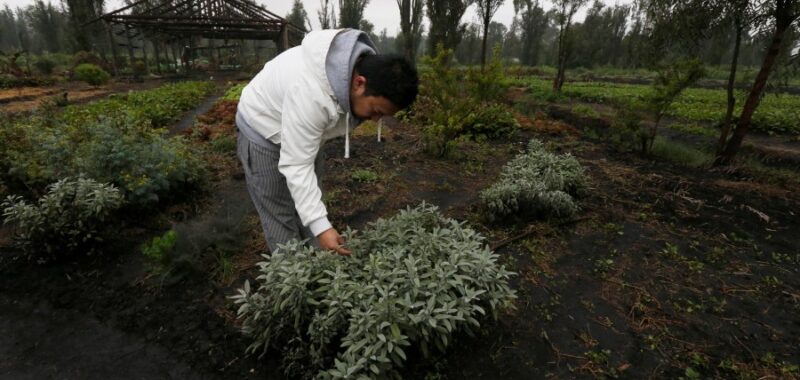
The Supreme Court recently declined to suspend new environmental rules requiring oil and gas operations to cut their methane emissions, allowing the rules to move forward while challenges play out in the lower courts. That’s significant, but even assuming these rules are implemented, we will still need to tackle other major sources of methane that have gotten much less attention, especially inland waters and wetlands.
Generating 1.5 times more methane than the entire oil and gas sector, these sources attract only a tiny fraction of federal funding. The U.S. Army Corps of Engineers and the Bureau of Reclamation, which between them control 128 reservoirs (including some of the nation’s largest), could be the biggest methane emitters in North America.
Methane is a “climate super pollutant,” at least 80 times more potent a warming agent than carbon dioxide over a 20-year period. It has already caused one-third of modern warming. The latest Global Methane Budget shows atmospheric methane concentrations at record highs and rising faster than ever before observed, faster indeed than any other greenhouse gas. And as the planet warms, methane emissions will get worse.
The problem is so urgent that the National Academies of Sciences, Engineering and Medicine just released a report on developing atmospheric methane removal technologies to turn back the clock on methane emissions.
We cannot un-emit what has already been released. But the good news is that methane has a half-life in the atmosphere of just 7-12 years. So if we aggressively cut methane emissions across the board now, atmospheric methane concentrations could fall in as little as a decade, reducing the greenhouse effect and global temperature rise in the next 10 to 20 years. That could prove decisive in avoiding looming climate feedback loops and tipping points.
Lowering atmospheric methane is the most powerful lever — and maybe the only lever — we have to reduce near-term warming. That’s why 155 countries signed the Global Methane Pledge, promising to cut methane emissions by 30 percent by 2030. Despite this, methane is increasing faster than ever. Only the European Union and possibly Australia appear to have lowered their anthropogenic methane emissions over the last two decades. Elsewhere, they are rising.
Aquatic methane could hold the key to reversing the rise.
To cut methane emissions, climate policymakers have focused largely on plugging leaky oil and gas infrastructure, which is critical. But we now know aquatic sources are even bigger, lower-hanging fruit, accounting for nearly half of global methane emissions.
Runoff-impaired reservoirs, lakes, ponds and lagoons emit gigantic amounts of methane. Global temperatures have risen 1.25 degrees Celsius since pre-industrial times, triggering explosive growth in algae blooms and aquatic vegetation, which accumulate as anaerobic benthic sludge, a methane breeding ground. They haven’t been prioritized for climate intervention yet — that needs to change.
The irony is, we know quite well how to tackle this problem. Impaired water conditions that cause aquatic methane emissions can be reversed without toxic chemicals, through biological and mechanical filtration, circulation and reoxygenation of water.
Floating island gardens, or chinampas, built by the Aztecs are an example of such techniques. They take up waterborne nutrients so that agriculture thrives on top, while the water beneath them is filtered, oxygenated and full of fish. Some chinampas built 500 years ago are still farmed, designated by the United Nations as Globally Important Agricultural Heritage Systems.
Today, modern floating islands use similar techniques to cut methane emissions. They are engineered to be sustainable, permeable substrates for plants and microbes that circulate, filter and reoxygenate water. They maintain natural methanotrophic bacteria that eat 50-80 percent of methane from decomposing organic material. That keeps the swamp gas smell and mosquitos down, cutting the water body’s methane emissions at least in half. Today there are some 12,000 of these modern floating island systems installed worldwide. We would need orders of magnitude more in order to have the desired effects.
We also have advanced water management techniques and high-tech tools like drone-based aquatic monitoring systems and incredibly sensitive eDNA analysis that differentiate between healthy and impaired, methane-generating waters. So the problem isn’t know-how; it’s scaling what we already know how to do.
Reclaiming impaired inland waters so that they grow fish and other healthy biota instead of methane will require the Army Corps of Engineers and Bureau of Reclamation to confront oxygen depletion in the large reservoirs they manage. It will require thousands of municipalities to address hundreds of thousands of stormwater ponds, wastewater lagoons and subdivision waterways, as well as local rivers, lakes and reservoirs that are now methane emitters. The public and private sectors must coordinate and act now.
Reducing overall methane emissions is the best lever we have for reducing near-term warming. Aquatic methane could be the best lever for reducing overall methane emissions; it’s time to pull that lever.
Bruce Kania is CEO of Floating Islands International. Lisa Y. Stein is professor and Canada Research Chair in Climate Change Microbiology at the University of Alberta.

